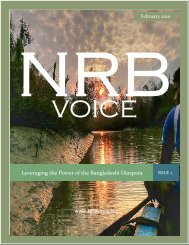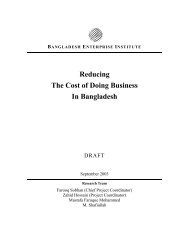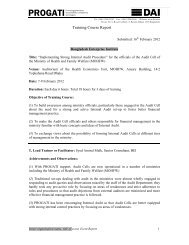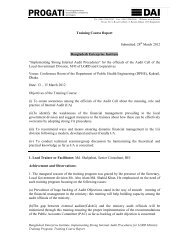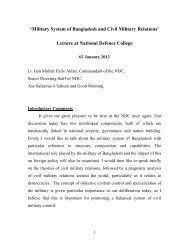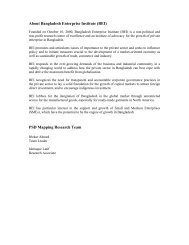Bangladesh Social Enterprise Project - Bangladesh Enterprise Institute
Bangladesh Social Enterprise Project - Bangladesh Enterprise Institute
Bangladesh Social Enterprise Project - Bangladesh Enterprise Institute
You also want an ePaper? Increase the reach of your titles
YUMPU automatically turns print PDFs into web optimized ePapers that Google loves.
cleaner, cheaper and more reliable energy. Despite the typically low operating costs of<br />
these alternative energy sources, prohibitively high upfront costs have proven to be one of<br />
the main obstacles for the poor in accessing alternative energy. By making microfinance<br />
loans available to pay for modern energy services, microfinance institutions (MFIs) are<br />
overcoming this problem by expanding access to loans for many people living in rural areas.<br />
However, while access to micro‐energy loans is already underway in several countries, much<br />
needs to be done to realise the potential of such loans on a larger scale.<br />
Two factors are central to this aim; firstly, the establishment of partnerships with energy<br />
suppliers and, secondly, innovative financing mechanisms.<br />
Partnering with Energy Suppliers<br />
Energy lending success stories in developing countries have thus far been primarily based on<br />
partnerships between MFIs and energy suppliers in Asia and Africa. These have employed a<br />
variety of models, from partner‐agent arrangements to fully integrated energy loans‐salesservice<br />
ventures. This being the case, finding partners is often difficult due to the lack of<br />
technical knowledge on the part of MFIs regarding alternative energy systems; the<br />
perceptions and attitudes of energy suppliers regarding the microfinance industry; as well as<br />
a poor depth of understanding on both sides regarding the market and the financial and<br />
energy needs of clients.<br />
Energy lending ‐ selling the product to partners<br />
There is an inherent difference between traditional financial products (such as credit and<br />
insurance) and energy loans. For MFIs, the collection of loans or insurance premiums based<br />
on traditional financial products are not necessarily dependent on the use or sustainability<br />
of end‐user technologies. Energy loans, as products aimed at a specific suite of technologies,<br />
add a layer of complexity and pose additional challenges in demonstrating the economic<br />
value of these loans to potential formal partners.<br />
Just as microcredit loans are fungible, energy is used for a variety of reasons, many that may<br />
not be directly related to ‘productive’ use. However, the experience of several MFIs<br />
currently issuing energy loans is that their range of clients includes both those that have the



